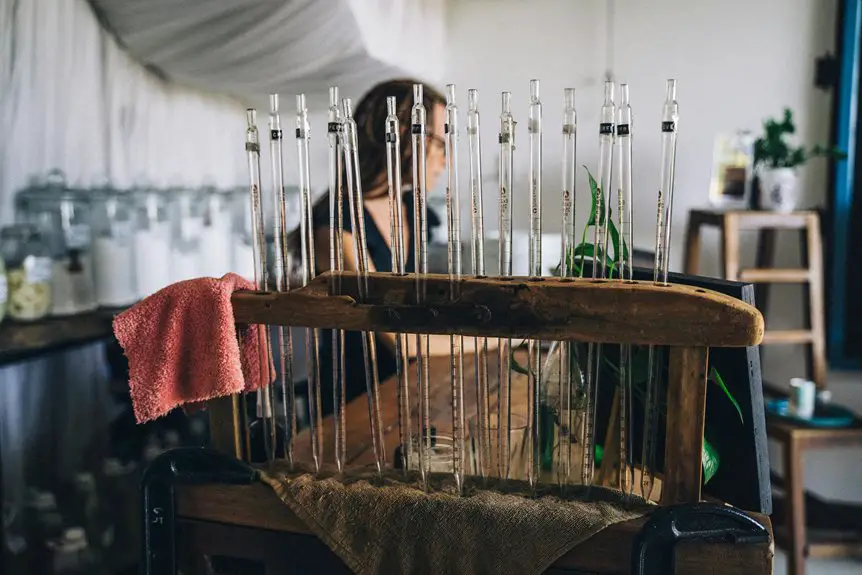Breathability in fabrics isn’t just a fancy marketing term—it’s what keeps you comfortable when the temperature rises or you’re on the move. You might think all fabrics let air through, but the truth involves a bit more science about how air and moisture interact with the material’s structure. Understanding this can change how you choose clothing or gear, especially when comfort and performance matter most. Let’s explore what really makes a fabric breathable.
Table of Contents
Key Takeaways
- Breathable fabrics have loosely woven or knitted structures that allow air and moisture vapor to pass through easily.
- Fabric breathability depends on fiber type, weave tightness, and fabric thickness influencing airflow and moisture transfer.
- Moisture vapor transfer through tiny pores helps keep skin dry by allowing sweat to evaporate quickly.
- Breathable fabrics wick moisture away from the skin, preventing dampness and overheating during physical activity.
- Testing breathability involves measuring air permeability and moisture vapor transmission to quantify fabric comfort performance.
Understanding Air Permeability in Fabrics
Although you mightn’t notice it, air permeability plays an essential role in how comfortable a fabric feels. When you wear clothing, airflow dynamics determine how well air passes through the material, impacting breathability.
Different fabric types have varying structures that either allow or restrict this airflow. For example, loosely woven fabrics like cotton promote better air circulation, keeping you cool, while tightly woven synthetics might trap heat.
Understanding air permeability helps you choose fabrics that suit your comfort needs, especially in warm or active conditions. By paying attention to how fabric types influence airflow, you can pick garments that improve ventilation and reduce discomfort caused by overheating or sweating.
This knowledge empowers you to make smarter wardrobe choices for everyday comfort.
How Moisture Vapor Transfer Works
When you wear breathable fabrics, moisture vapor transfer plays an essential role in keeping you dry and comfortable. This process moves sweat away from your skin, reducing moisture retention and allowing it to evaporate quickly.
Here’s how it works:
- Sweat vapor passes through tiny pores in the fabric.
- The fabric’s ability to let vapor escape speeds up the evaporation process.
- As moisture evaporates, it cools your skin and prevents dampness.
The Role of Fabric Construction in Breathability
You’ll notice that the way a fabric is woven or knitted greatly affects how well it breathes.
Thinner fabrics with looser patterns let air and moisture pass through more easily.
Understanding these construction details helps you pick materials that keep you comfortable.
Weave and Knit Patterns
Because the way fabric is constructed directly impacts its breathability, understanding weave and knit patterns is essential.
Woven structures typically have a tighter, crisscross arrangement that can limit airflow, while knitted textures form loops that create more space between fibers, enhancing breathability.
When you choose fabrics, consider these factors:
- Tight woven structures: Provide durability but reduce air circulation.
- Loose woven structures: Allow more air to pass, improving comfort.
- Knitted textures: Offer stretch and superior ventilation due to looped yarns.
Fabric Thickness Impact
The structure of a fabric influences how thick or thin it feels, which directly affects its breathability. When you wear thicker fabrics, they usually trap more heat and moisture because their dense construction limits airflow.
Fabric density effects play an essential role here—higher density means fewer air pockets and less breathability. Conversely, thinner fabrics with lower fabric density allow more air to pass through, helping sweat evaporate faster and keeping you cooler.
Thickness variations within the same fabric type can also impact comfort; even slight differences can change how well the fabric breathes.
Comparing Different Types of Breathable Fabrics
Although all breathable fabrics aim to keep you comfortable by allowing air and moisture to pass through, they vary considerably in performance, feel, and suitability for different activities.
When deciding between cotton vs polyester, cotton excels in softness and moisture absorption, but polyester dries faster and resists wrinkles.
Similarly, linen vs rayon offers distinct experiences: linen is crisp and highly breathable, ideal for hot climates, while rayon feels smoother and drapes well but may trap moisture more.
Consider these key points:
- Cotton: Natural, soft, highly breathable, but slower drying.
- Polyester: Synthetic, moisture-wicking, quick-drying, durable.
- Linen: Lightweight, excellent airflow, slightly rougher texture.
Knowing these differences helps you pick the best fabric for comfort and function in any situation.
Techniques for Measuring Fabric Breathability
To understand how breathable a fabric truly is, you’ll need to look at specific testing methods like Moisture Vapor Transmission and Air Permeability Testing.
These techniques show how well moisture and air pass through the material.
You can also explore Sweat Simulation Methods to see how fabrics handle real-world conditions.
Moisture Vapor Transmission
When you want to evaluate how well a fabric lets moisture escape, measuring moisture vapor transmission is essential. This process quantifies how moisture vapor moves from the inside to the outside, reflecting the fabric’s breathability.
It’s all about balancing moisture retention and vapor pressure differences across the fabric.
To measure moisture vapor transmission, you can use:
- Cup Method: Seals fabric over a container of water and tracks weight loss due to vapor escape.
- Sweating Guarded Hotplate: Simulates skin sweating and measures moisture passing through fabric.
- Infrared Sensors: Detect moisture vapor concentration changes near the fabric surface.
Each technique helps you understand how efficiently the fabric manages vapor pressure, ensuring comfort by reducing moisture buildup against your skin.
Air Permeability Testing
Since breathability depends not only on moisture vapor but also on airflow, you’ll want to measure air permeability to get a full picture of fabric performance.
Air permeability testing evaluates how easily air passes through a fabric, providing essential insight into airflow dynamics. You can use instruments like air permeability testers that push a controlled volume of air through the fabric and measure the flow rate.
This data helps you understand how well the fabric allows air circulation, which is vital for comfort and cooling. When considering fabric selection, air permeability results guide you in choosing materials that balance breathability with protection.
Sweat Simulation Methods
Understanding airflow through air permeability testing gives you part of the breathability picture, but capturing how fabrics handle moisture from sweat adds another layer.
Sweat simulation methods help you assess sweat absorption and moisture retention, essential for real-world comfort. These techniques mimic the body’s natural perspiration and measure how fabrics respond.
Common sweat simulation methods include:
- Sweat chamber tests: Control temperature and humidity to evaluate moisture management.
- Dynamic sweating guarded hotplate: Measures evaporative resistance and simulates sweating under pressure.
- Moisture vapor transmission rate (MVTR): Quantifies how quickly moisture passes through fabric.
Using these methods, you can better understand a fabric’s ability to keep you dry by efficiently absorbing and releasing sweat, ensuring ideal breathability beyond just airflow.
Challenges Impacting Breathability Performance
Although breathable fabrics offer comfort and moisture management, several challenges can limit their effectiveness.
You might notice that fabric coatings, applied to enhance properties like water resistance, can reduce breathability by blocking air and moisture flow. Environmental factors also play a role; high humidity and temperature can overwhelm a fabric’s ability to wick sweat away, making you feel clammy despite the fabric’s design.
Additionally, dirt and oils from your skin can clog fabric pores over time, further restricting airflow. To maintain breathability, you’ll need to balance protective coatings with ventilation needs and consider the conditions in which you wear the fabric.
Understanding these challenges helps you choose breathable fabrics that perform well in real-life situations.
Why Breathability Matters for Comfort and Health
When you wear breathable fabrics, your body can regulate temperature more effectively, keeping you comfortable throughout the day.
These fabrics offer significant comfort benefits by allowing air to circulate, which helps wick away moisture and prevent overheating. This airflow reduces sweat buildup, so you feel fresher and less sticky.
Breathable fabrics promote air circulation to wick moisture and keep you feeling fresh and cool all day.
Beyond comfort, breathable fabrics have important health implications. They minimize skin irritation and reduce the risk of fungal infections caused by trapped moisture.
Here’s why breathability matters for you:
- Enhances moisture management, keeping skin dry
- Prevents overheating and excessive sweating
- Supports skin health by reducing irritation and bacteria growth
Frequently Asked Questions
Can Breathable Fabrics Cause Allergies or Skin Sensitivities?
Think of breathable fabrics like open windows—they usually let fresh air in, but sometimes they carry allergy triggers. If you have sensitive skin, these fabrics might cause skin irritation, so choose materials carefully to avoid discomfort.
How Do Washing and Care Affect Fabric Breathability Over Time?
You’ll notice fabric maintenance and washing techniques directly impact breathability; harsh detergents and high heat can clog fibers, reducing airflow. To keep fabrics breathable, use gentle cycles and mild soaps, preserving their performance over time.
Are Breathable Fabrics Environmentally Friendly or Sustainable?
Imagine choosing a jacket like picking fruit—breathable fabrics often come from sustainable materials. If you use eco friendly practices, you’re not just wearing comfort; you’re supporting a greener planet, one thread at a time.
Can Breathable Fabrics Block UV Rays Effectively?
You can find breathable fabrics that offer UV protection, but effectiveness varies by fabric types. Look for materials like tightly woven polyester or specially treated cotton—they let air through while blocking harmful UV rays to keep you safe.
How Do Breathable Fabrics Perform in Extreme Cold Conditions?
You might expect breathable fabrics to struggle in extreme cold, but they actually excel in cold weather performance by managing moisture efficiently. They keep you dry and warm, preventing chills caused by trapped sweat or dampness.
- Tetron Fabric for Marine Applications: Durability and Use Cases - June 18, 2025
- Tetron Fabric for Outdoor Furniture: Weather Resistance and Care - June 18, 2025
- Tetron Fabric for Wall Coverings: Style and Application Tips - June 18, 2025






